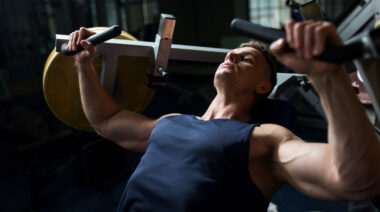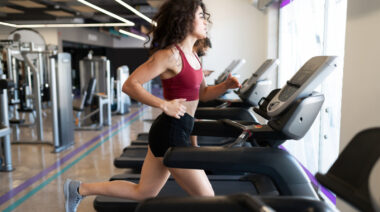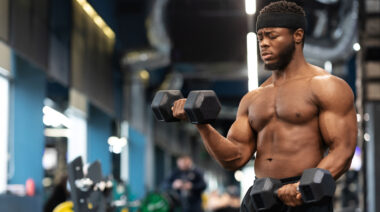The number of brave souls venturing out on our local club ride is beginning to dwindle. With the temperatures steadily dropping, the thought of venturing into the open sounds less attractive by the day. However, with only a relatively small expenditure, it is quite easy to set up a home gym that will maintain your fitness and even help you improve through the long winter months.
A garage or spare room provides an excellent location to set up. If your resources are more limited, then maybe a hallway or room that is not used all the time might be a useful place to start. A reasonably weatherproof shed can also make a good home gym. If you live alone, you might have some more options on the use of space than if you have family members or flat mates. I have seen kitchens and a home office be repurposed as indoor gyms when not used for their usual functions. I have also known people that have shared the cost and agreed to meet and train together.
Now let’s get into what resources you might need.
Build Your Winter Cycling Pain Cave: Part 1 – The Equpiment
Turbo Trainer
The first thing you need is a turbo trainer. You do not have to buy a top of the range unit to obtain a good workout. However, it should provide some means of adjusting the resistance, and be:
- Easy to set up and pack away
- Quiet
- Stable on the floor
- Strong and have a secure mounting for your bike
I would avoid anything with a brake pad type of resistance unit, since these frequently have uneven resistance settings. Most magnetic resistance units are adjustable and quiet.
An indoor trainer tire is a worthwhile investment. The rubber is a slightly different composition to normal road tires, providing additional grip. They also have a smooth profile that reduces noise.
Suspension Trainer
A suspension trainer is a worthwhile investment for your home gym. They can help to considerably expand the range of exercises available to you. They also provide a means of performing pulling and rowing motions using body weight that can be difficult to perform otherwise. Many of these are available with customized fixing for use indoors. Do make sure that your fixing points are very secure and that you follow the mounting instructions to the letter.
Heart Rate Monitor
A heart rate monitor strap and watch helps indicate the level of intensity you may be working at and reduces some of the guesswork in assessing how hard and how long you have been working. As a minimum I would look for one that can display your heart rate and a stop watch function on the same screen. This will enable you do interval sessions.
A Step
You may already have access to a step or stairs built into the fabric of your home. A single step provides a ready-made location for step ups, or as a place to provide some support for body weight exercises. Alternatively, you could use a commercial exercise step. Do make sure your step is strong and stable, and able to take the strain of repeated use without collapsing.
A Mat
In order to avoid damage to your furnishings I would highly recommend a mat. This can be placed under your cycle on a turbo trainer to catch perspiration that would otherwise drop onto the floor. It can also be used to cover your step or exercise area to avoid wear or damage. If you have a hard floor surface then it helps avoid some discomfort too.
A Plan and Diary
This is essential. Without a diary or a plan it is all too easy to leave things to another day or forget what you did last time. Your plan needs to be realistic to work around your other commitments. It is also good idea to have a regular schedule to work to, so that your sessions fit into a routine. It also needs to provide some goals to aim at. A good session plan will also keep you focused on what you are doing and what comes next.
Entertainment
Sometimes it can be mentally challenging to exercise on your own. Some of your favorite fast paced tracks might help provide some added mental energy. A regular supply of action films (or replays of the years major cycling events) can also help to provide interest in longer endurance sessions.
Build Your Winter Cycling Pain Cave: Part 2 – The Program
You don’t have to break the bank to set up a place to exercise in your home. Starting with the examples above, you could easily make up a varied and interesting training week. For example:
- One long endurance turbo session
- One short but intense turbo interval session
- Two body weight resistance sessions
Bodyweight resistance sessions can include a huge variety of suitable exercises including:
- Squats (two legged and one legged with the support of a step)
- Lunges
- Step ups and step downs
- Burpees and mountain climbers
- Push ups and pulls (using the suspension trainer)
You can also combine the turbo and bodyweight sessions into your own circuit. There are plenty more examples of body weight exercises that you can find here on Pulse Beat Fit.
Don’t want to work out at home? Go hit the weights:






